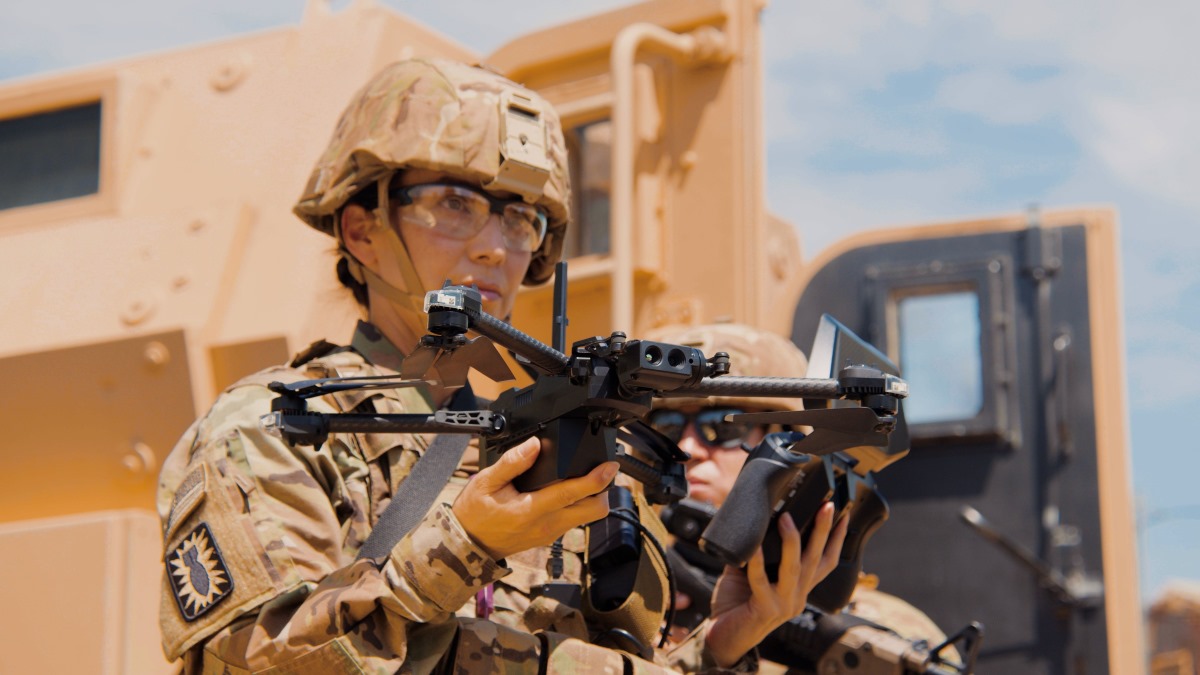
It’s no secret Russia’s cakewalking expectations to invade and quickly take over Ukraine were upended in large part by defenders’ wide-ranging and extremely effective repurposing of comparatively cheap consumer UAVs into munitions-dropping strike vehicles. Now the US Army is moving to replicate that example, representing a potential boon for small drone partners.
According to a call for bids from aerial tech suppliers by its Small Business Innovation Research unit, the US Army is looking to adapt non-combat drones already at their disposal with (as the solicitation is titled) “Lethal Payloads for Small Unmanned Aerial Systems.”
Read: Exclusive: Insiders describe Ukraine operation preparing drone strikes inside Russia
According to the document, the initiative seeks to transform drones already qualified for the Department of Defense (DoD) Blue sUAS list of trusted suppliers into munitions-loaded and -dropping UAVs. Those would eventually become standard US Army issue equipment for combat units and infantry soldiers, along with rifles, sidearms, and grenades.
The tender notes that current use of Blue sUAS drones are limited to “intelligence, surveillance, and reconnaissance (ISR) capabilities.” If successful, the adaptation of those UAVs to carry charges could give rise to mass produced craft costing far less than military-grade aerial systems, and “increase the lethality of (the US Army’s) Infantry Brigade Combat Teams.”
The only Blue uSUAS company excluded from bidding is Swiss drone maker Wingtra – a sidelining not imposed on French co-listee Parrot. That may indicate that rather than national origin, it’s the four-foot span of WingtraOne that’s considered incompatible with US Army objectives of developing small, easily transportable UAV munitions devices.
Details of what’s being sought are spelled out in the May 11 tender publication specs for vehicles and carried munitions:
These payloads should:
- Be attachable by Soldiers in the field
- Employ ammunition or explosives currently in the Government inventory, allowing units to order through standard channels
- Increase the lethal capability beyond that of the M67 fragmentation grenade-based solution currently in development
- Integrate into the selected platform
- Operate on the platform controller or include a simple system to initiate the payload (long term desire is for ATEK integration)
- Be able to pass applicable safety testing
- Be able to be made safe and dismounted from the platform if not detonated
First reported this month by Defense One, the move to enable drones supplied by Blue sUAS producers to drop charges clearly marks the US Army acting on the critical contributions that adapted consumer and enterprise UAVs have made to Ukraine’s defense efforts.
In doing so the DoD is evidently aiming to provide its military base with commensurate aerial fighting tech to the highly sophisticated – and expensive – systems positioned at the top of the martial asset pyramid.
Read: Red Cat to sell consumer drone units Rotor Riot and Fat Shark to focus on security specialist Teal
An interesting side consideration in that will be watching whether further expansion of US Army uses of Blue sUAS drones will motivate supplying companies to prioritize their focus on defense UAVs over development of consumer craft.
Some sector experts have speculated that shift is already underway. By way of example, Teal Drones owner Red Cat Holdings has made major business gains following its pivot last year from consumer tech to specialize in security and defense activities.
The underlying logic of that has added to rumors Blue sUAS firm Skydio may be also moving in a similar direction. The company, which was unable to respond to DroneDJ’s request for comment before publication, has in the past rebuffed those theories by noting it is still working on consumer craft updates.
Read: Skydio wins US Army’s $100 million small drone recon contract
However, appearance of the US Army tender – and indications of possibly proliferating opportunities and funding for small craft defense applications – happens to coincide with retailer supplies of the Skydio’s drone now virtually exhausted. Meanwhile, according to the Defense One report, specialized US Army units are already experimenting with ways to enable the California-based company’s Skydio X2D – currently the only Blue uSUAS craft used by forces for ISR purposes – to drop M67 grenades.
FTC: We use income earning auto affiliate links. More.




Comments